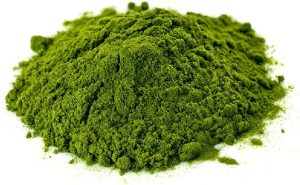
- Overview of Copper
- Brief History of Copper
- Functions of Copper
- Recommended Daily Intake (RDI), Recommended Dietary Allowance (RDA), Adequate Intake (AI) or Reference Nutrient Intake (RNI) for Copper
- Deficiency of Copper
- Food Sources of Copper and Where to Get it From
- Copper and Its Interaction with Other Medications
- Websites and Articles to Delve into the Benefits of Copper
- Disclaimer
Overview of Copper
In medicine, copper plays a crucial role as an essential trace element necessary for various physiological functions in the human body.
It contributes to the formation of connective tissues, supports the immune system, and aids in the absorption of iron. Copper is an integral component of enzymes involved in energy production, antioxidant defense, and neurotransmitter synthesis.
While copper deficiency is rare, excessive copper intake can lead to toxicity and adverse health effects. Medicinal applications involve the use of copper-infused materials for wound healing and antimicrobial purposes. Copper bracelets, for example, are thought by some to alleviate joint pain, although scientific evidence supporting these claims is limited.
The delicate balance of copper in the body underscores its significance in maintaining overall health and highlights its intersection between medicine and material science.
Brief History of Copper
Copper has been known for its antibacterial properties, and historically, copper-containing materials were used for various purposes, including water storage and the treatment of wounds.
In recent times, there has been growing interest in exploring the potential medical applications of copper, particularly its antimicrobial properties. Research has investigated the use of copper-infused materials in healthcare settings to reduce the transmission of infections in hospitals. Copper surfaces have shown the ability to kill a variety of microbes, including bacteria and viruses.
While the historical use of copper minerals in medicine might not be as well-documented as their industrial applications, ongoing research continues to uncover new insights into the potential benefits of copper in healthcare and medical settings. Always refer to the latest scientific literature for the most up-to-date information on this topic.
| Time Period | Key Events and Uses |
|---|---|
| Historical Periods | Copper-containing materials used for water storage and wound treatment. |
| Recent Times | Growing interest in the antimicrobial properties of copper. |
| Research on copper-infused materials in healthcare settings. | |
| Copper surfaces found effective in killing bacteria and viruses. | |
| Ongoing Research | Exploration of potential medical applications of copper. |
| Continued investigation into the benefits of copper in healthcare. | |
| Emerging insights into the role of copper in reducing infections in hospitals. | |
| Note: Always refer to the latest scientific literature for updated information on copper’s applications in medicine. |
Functions of Copper
Copper is an essential trace element in the human body, playing crucial roles in various physiological functions, including those related to medicine. Here are some key functions of copper in the context of medicine:
- Enzyme Activation:
- Copper serves as a cofactor for several enzymes, including cytochrome c oxidase, superoxide dismutase, and ceruloplasmin. These enzymes are involved in energy production, antioxidant defense, and iron metabolism.
- Iron Metabolism:
- Copper is essential for the absorption, transport, and utilization of iron. It plays a role in the formation of hemoglobin and helps regulate iron levels in the body.
- Connective Tissue Formation:
- Copper is involved in the cross-linking of collagen and elastin, crucial components of connective tissues. This is important for the integrity of blood vessels, skin, and other structural tissues.
- Neurotransmitter Synthesis:
- Copper is a cofactor for enzymes involved in the synthesis of neurotransmitters, such as dopamine and norepinephrine. Proper copper levels contribute to normal brain function.
- Immune System Support:
- Copper is necessary for the proper functioning of the immune system. It is involved in the maturation of white blood cells and the activity of immune cells.
- Antioxidant Defense:
- Copper is a component of the antioxidant enzyme superoxide dismutase, which helps protect cells from oxidative stress by neutralizing harmful free radicals.
- Wound Healing:
- Copper plays a role in the formation of new blood vessels (angiogenesis) and collagen synthesis, contributing to the wound healing process. Copper-infused dressings have been explored for their potential benefits in wound care.
- Antimicrobial Properties:
- Copper exhibits inherent antimicrobial properties. Copper surfaces can help reduce the transmission of infections in healthcare settings by rapidly killing bacteria, viruses, and fungi on contact.
It’s important to note that while copper is essential for health, excessive intake can lead to toxicity. Wilson’s disease is a rare genetic disorder characterized by impaired copper metabolism and can result in copper accumulation in the body, leading to various health issues. Maintaining an appropriate balance of copper is essential for overall health and well-being. As with any mineral, dietary copper intake should align with recommended levels.
Recommended Daily Intake (RDI), Recommended Dietary Allowance (RDA), Adequate Intake (AI) or Reference Nutrient Intake (RNI) for Copper
The recommended dietary allowances (RDAs) and other specific intake guidelines for copper can vary slightly among different countries and health organizations. Additionally, recommendations may be updated over time based on new research. Below are general guidelines for copper intake according to the U.S. National Institutes of Health (NIH):
- Recommended Dietary Allowance (RDA): The RDA for copper varies by age and life stage. As of my last update:
- Infants (0-6 months): 0.2 mg
- Infants (7-12 months): 0.22 mg
- Children (1-3 years): 0.34 mg
- Children (4-8 years): 0.44 mg
- Children and Adolescents (9-18 years): 0.89 mg
- Adults (19 years and older): 0.9 mg
- Pregnancy and Lactation:
- Pregnant Women: 1.0 mg
- Lactating Women: 1.3 mg
It’s important to note that copper requirements can vary based on factors such as age, sex, life stage, and individual health conditions. The Adequate Intake (AI) is used in cases where there is insufficient evidence to establish an RDA. The AI for copper for adult men and women is 0.7 mg per day.
Dietary sources of copper include seafood, nuts, seeds, whole grains, legumes, and organ meats. It’s essential to maintain a balanced diet to ensure adequate intake of copper without exceeding tolerable levels, as excessive copper intake can lead to toxicity.
For the most up-to-date and specific recommendations, it’s advisable to refer to the dietary guidelines or recommendations provided by health authorities in your region or consult with a healthcare professional or registered dietitian.
Deficiency of Copper
Copper deficiency is a rare condition that can occur when there is an insufficient intake or absorption of copper from the diet. While uncommon, copper deficiency can have significant health implications due to the essential roles copper plays in various physiological processes.
Potential consequences and symptoms of copper deficiency are following:
- Anemia:
- Copper is essential for the proper utilization of iron, and its deficiency can lead to anemia. This is because copper is involved in the synthesis of hemoglobin, the oxygen-carrying component of red blood cells.
- Bone Abnormalities:
- Copper is necessary for the maintenance of healthy bones and connective tissues. A deficiency may contribute to bone abnormalities and skeletal defects.
- Neurological Issues:
- Copper is crucial for normal brain function. Copper deficiency may lead to neurological symptoms such as neurodevelopmental delays in infants, impaired coordination, and disturbances in mood and cognition.
- Weak Immune System:
- Copper is involved in the development and function of the immune system. A deficiency may compromise the body’s ability to fight infections.
- Oxidative Stress:
- Copper is a component of antioxidant enzymes, and its deficiency may contribute to an imbalance in oxidative stress, leading to cellular damage.
- Skin and Hair Changes:
- Copper deficiency may manifest as changes in the skin and hair, including depigmentation (loss of color) of the skin and hair.
- Impaired Collagen Formation:
- Copper is necessary for the cross-linking of collagen and elastin, which are essential components of connective tissues. A deficiency may lead to skin and tissue abnormalities.
Copper deficiency can be caused by various factors, including:
- Inadequate dietary intake of copper.
- Malabsorption issues, such as in celiac disease or after gastrointestinal surgery.
- Excessive zinc intake, as high levels of zinc can interfere with copper absorption.
Copper deficiency is typically addressed by increasing copper intake through dietary sources or supplements, depending on the underlying cause. It’s essential to diagnose and treat copper deficiency under the guidance of a healthcare professional, as copper supplementation should be done carefully to avoid toxicity. If you suspect a copper deficiency, consult with a healthcare provider for proper evaluation and management.
Food Sources of Copper and Where to Get it From
Copper is found in a variety of foods, and maintaining a balanced diet can help ensure an adequate intake of this essential trace element. Here are some common food sources of copper:
- Organ Meats:
- Liver (especially beef liver) is one of the richest sources of copper.
- Shellfish:
- Oysters, crab, and mussels are high in copper.
- Nuts and Seeds:
- Sunflower seeds, sesame seeds, and cashews are good sources.
- Legumes:
- Lentils and chickpeas contain moderate amounts of copper.
- Whole Grains:
- Whole grains like oats, barley, and brown rice provide copper.
- Dark Chocolate:
- Cocoa and dark chocolate can contribute to copper intake.
- Leafy Green Vegetables:
- Spinach, kale, and Swiss chard contain some copper.
- Fruits:
- Avocado and blackberries are fruits with notable copper content.
- Dried Fruits:
- Raisins and prunes are sources of copper.
- Meat:
- Beef, lamb, and pork contain copper, but the levels are generally lower compared to organ meats.
- Dairy Products:
- Cheese and yogurt contain copper, though the levels can vary.
- Copper-Fortified Foods:
- Some cereals and plant-based milk alternatives may be fortified with copper.
It’s important to note that the copper content in food can vary depending on factors such as soil quality, processing methods, and cooking techniques. While copper is essential for health, excessive intake can lead to toxicity. Therefore, it’s generally recommended to obtain copper through a balanced and varied diet rather than through supplementation unless advised by a healthcare professional.
If you have specific dietary concerns or restrictions, consulting with a registered dietitian or healthcare provider can help ensure you are meeting your nutritional needs, including an appropriate intake of copper.
Copper and Its Interaction with Other Medications
Copper interactions with medications are generally not extensively documented, and copper is not known to interfere significantly with the absorption or effectiveness of common medications. However, there are a few considerations related to copper and its potential interactions with other substances:
- Zinc and Iron Supplements:
- Excessive intake of zinc or iron supplements can interfere with copper absorption. High levels of these minerals can compete with copper for absorption in the intestines. If you are taking zinc or iron supplements, it’s advisable to maintain an appropriate balance with copper intake.
- Vitamin C:
- While vitamin C is important for the absorption of non-heme iron (found in plant-based foods and supplements), it may also increase the absorption of copper. This is generally not a concern in a well-balanced diet, but individuals taking high doses of vitamin C supplements may want to be mindful of their copper intake.
- Chelation Therapy:
- Chelation therapy is a medical treatment involving the use of chelating agents to remove heavy metals from the body. Copper is a trace element, and excessive removal can lead to copper deficiency. Individuals undergoing chelation therapy should be monitored for potential nutritional deficiencies.
- Corticosteroids:
- Long-term use of corticosteroids may affect copper metabolism and increase copper excretion. This could potentially lead to a copper deficiency over time.
It’s crucial to note that copper is an essential nutrient, and maintaining an appropriate balance is important for overall health. While interactions are generally not a major concern with copper, it’s advisable to inform your healthcare provider about all medications and supplements you are taking to ensure comprehensive and personalized guidance.
As with any health-related questions or concerns, consulting with a healthcare professional, such as a doctor or pharmacist, is recommended for personalized advice based on your specific health status and medications.
Websites and Articles to Delve into the Benefits of Copper
Here are websites along with brief descriptions that you can explore for information on copper:
- National Institutes of Health (NIH) – Office of Dietary Supplements:
- NIH ODS provides evidence-based information on copper’s role in health, dietary sources, recommended intake, and potential health effects.
- World Health Organization (WHO):
- WHO’s page on copper in drinking water offers insights into copper levels, standards, and health considerations.
- American Cancer Society (ACS):
- MedlinePlus:
- MedlinePlus provides information on the role of copper in the diet and its health implications.
- PubMed – National Library of Medicine:
- PubMed is a vast database of biomedical literature. You can search for specific research articles and reviews related to copper in medicine.
- Copper Development Association:
- This organization provides information on various applications of copper, including its use in medicine and health.
Remember to critically evaluate information and prefer sources from reputable institutions, research journals, and governmental organizations to ensure accuracy and reliability. Remember to evaluate information critically and verify details from multiple reputable sources.
Disclaimer
The information is solely provided for educational purposes. It is not intended to diagnose, treat, cure, or prevent any disease. Seek the advice of your physician or qualified healthcare provider with any questions you may have regarding a medical condition at all times. Never disregard professional medical advice because of something you have read or learned from this article.






